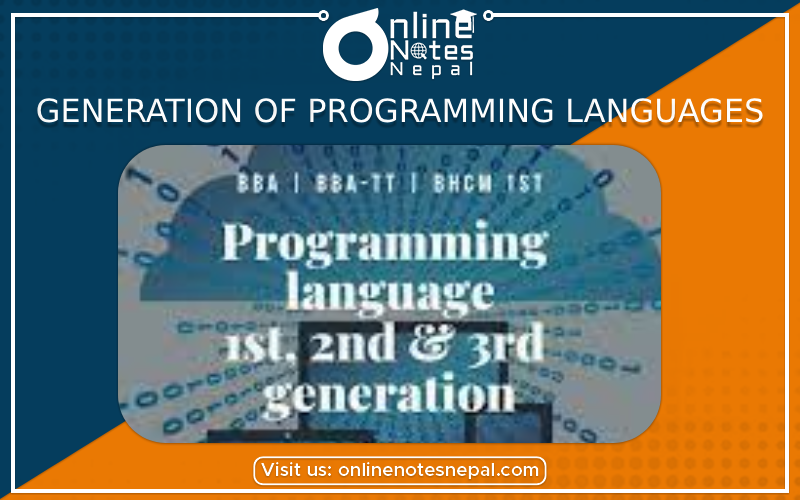Published by: Anu Poudeli
Published date: 31 Jul 2023

The classification and evolution of programming languages based on their development chronology and features is referred to as language generation. Over the years, programming languages have grown tremendously, with each generation introducing new concepts, approaches, and capabilities. The following is a summary of the many generations of programming languages:
1.Generation I (1940s-1950s):
The first generation of programming languages, often known as machine language or first-generation programming languages, matches directly to computer hardware architecture. These languages are particular to the computer's instruction set and are made up of binary code (0s and 1s). Because it needed in-depth understanding of computer hardware, programming in first-generation languages was time-consuming and error-prone.
2.Second Generation (1950s-1960s):
Assembly languages, or second-generation programming languages, were designed to make programming easier than using raw machine language. Mnemonics are used in assembly languages to represent machine instructions, making it easier for programmers to create code. However, programming at this level still needed a thorough understanding of hardware and was incompatible with other computer architectures.
3.Third Generation (the 1960s and 1970s):
The third generation of programming languages provided substantial advances and is regarded as a significant step forward in the evolution of programming languages. These languages were created to be more user-friendly by abstracting away hardware concerns and allowing for easier code development. Fortran, COBOL, ALGOL, BASIC, and C are examples of third-generation languages. They provided high-level abstraction, data structures, and control flow mechanisms.
4.Fourth Generation (1980s-1990s):
Domain-specific programming languages (4GLs) are designed to handle specific application domains or challenges. They are intended to make the development process more efficient by offering higher-level abstractions and strong built-in methods. 4GLs are commonly used in database management systems and corporate applications to speed up the creation of complex software. SQL (Structured Query Language) and numerous report generators are examples of 4GLs.
5.Fifth Generation (from the 1990s to the present):
Fifth-generation programming languages first appeared in the late 1980s and early 1990s. These languages are primarily concerned with logic programming and artificial intelligence. They are intended to aid natural language processing and provide efficient methods of interacting with knowledge representation and reasoning systems. Prolog and Lisp are two prominent fifth-generation languages. Despite their potential, fifth-generation languages have received little attention.
6.Domain-Specific Languages (DSLs):
Domain-Specific Languages are a category of languages rather than a specific generation. DSLs are designed to tackle problems in certain areas or sectors, allowing for more efficient development within such contexts. DSLs can be textual or graphical in nature, and they can be designed for activities like web templating, configuration management, and scientific simulations.
7.Generations to Come:
The concept of future generations of programming languages remains speculative as technology improves. However, potential future language approaches include greater parallelism and concurrency support, further abstraction to simplify complicated jobs, enhanced security features, and more powerful AI integration.
Finally, the creation of programming languages demonstrates the continual progress of technology and the search of more efficient and accessible software development methodologies. Each generation builds on the previous one, introducing new tools and capabilities that influence how programmers interact with computers and create novel applications and systems.